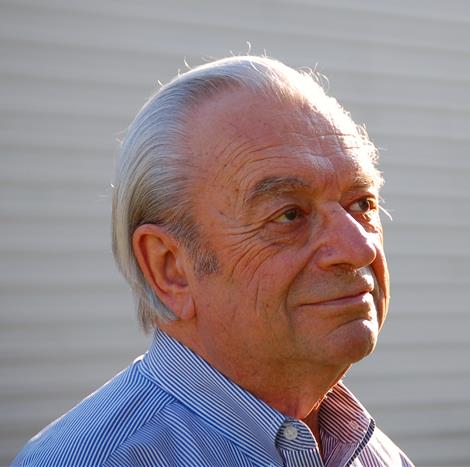Former professor Paris’ law of engineering lives on beyond his death
Outside of Murphy, few humans have a law named after them

Paul C. Paris, longtime professor of mechanical engineering in the School of Engineering & Applied Science at Washington University in St. Louis, was the notable exception.
Paris, who died Jan. 15, 2017, of natural causes at age 86, was known for many things, but one of the most remarkable is the equation he developed relating repeated mechanical loads to crack growth.
Known as Paris' law, the equation predicts how fast a structural crack will grow in response to repeated cycles of stress, thus providing a reliable, theory-driven estimate of a machine part's life.
His paper on the equation was published in 1961, but only after it was first rejected by three of the leading journals in the fracture mechanics field. Paris' law now is routinely used to design parts that vibrate, such as in commercial and military aircraft and ground vehicles.
His work created the basis for new analytical methods to address fatigue crack problems, which are still widely used to assess safety problems in an array of devices and structures where cracks pose a significant safety or economic concern.
His insights on fracture mechanics continue to set the standard in engineering education worldwide. His no-holds-barred outlook on life and colorful personality also left an indelible mark on the WashU community.
"Paul was an outstanding teacher and mentor, accomplished at discussing his work with students in the classroom, engineers in industry and academics in research," said Kenneth L. Jerina, the Earl E & Myrtle E Walker Professor of Engineering and friend and colleague of Paris for more than four decades. "Yet, he was personable, flamboyant, colorful, dramatic, insistent and sometimes controversial."
"He went to great lengths to be an effective teacher," said Jerina, also associate department chair for mechanical engineering. "One semester he returned from a European trip with two broken arms he'd suffered in a fall. He finished the semester seated in front of the class lecturing while colleague Hiroshi Tada wrote notes and equations on the chalkboard to aid his students."
Paris' worldwide reputation was well established long before he joined Washington University as a professor of mechanics in 1976.
His career and his law were borne out of a new transportation age that featured diesel train engines and jet airliners replacing coal and props, respectively. In 1954, two mysterious crashes of avant garde de Havilland jets put the industry and the U.S. military on full alert. Eventually, engineers determined that the combination of fatigue, recycling of cabin pressure, stress and fracture contributed to the disintegration of the aircrafts. Cracks had developed in the fuselage, and the planes came apart.
The following year, Paris joined Boeing Co. in Seattle as a research associate asked to get to the bottom of the jet failures. Before Paris' law, there had been no theoretical basis for predictions of failure caused by cracks, just empirical estimations.
Paris first started teaching fracture mechanics short courses during his Boeing years from 1955-60. He held a teaching position at the University of Washington from 1957-60. He returned to academia in 1960 to earn a doctorate from Lehigh University in 1962 and was on the faculty there until 1972. He was a visiting professor of engineering at Brown University from 1974-76.
Paris received many awards and honors over his long career, notably the Crichlow Trust Prize of the American Institute of Aeronautics and Astronautics, which included a citation and $100,000 honorarium; in 2009, he received an honorary doctorate from, fittingly, the University of Paris West.
For most of his WashU years, Paris lived on a farm on the outskirts of St. Louis. Farming was one of his hobbies, as was flying (he had a pilot's license), fine wines and France. He will be remembered for his rare, regal manner, highlighted by a dramatic shock of white hair and eyes that were intense, wise and warm. Through his books, teaching and professional appearances, he affected hundreds of thousands of engineers worldwide, and because of his law, his influence endures.



